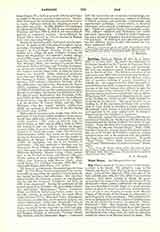

Pax (OSCULATORIUM, TABULA PACIS, LAPIS PACIS), a tablet to be kissed. The primitive usage in the Church was for the “holy kiss” to be given promiscuously. Later (Const. Apostol., VIII, xxix) men of the laity saluted men with the kiss, while women kissed women. This latter manner of giving the peace among the laity seems to have been maintained till the thirteenth century, when a substitute for the actual kiss was introduced in the shape of a small wooden tablet, or plate of metal (osculatorium, deosculatorium, asser ad pacem etc.) bearing an image of the Blessed Virgin, of the titular of the church, or other saint, or more frequently of the crucifixion. The earliest notice of these instruments is in the records of English coun-cils of the thirteenth century (Scudamore, “Notit. Eucharist.”, 438). This departure from the prevailing usage is attributed by Cardinal Bona (Rer. Liturg., II, xvi, §7) to the Franciscans. Kissed by the celebrant and cleansed with a linen cloth, the tablet or plate was carried to others to be likewise kissed by them. This ceremony still obtains in low masses (Rubr. Mis., X n. 3), when the peace is thus given to prelates and princes, not to others except in rare cases established by custom. The acolyte orserver kneeling at the right of the celebrant presents the tablet. The celebrant kissing it says: “Pax tecum”; the server answers: “Et cum spiritu tuo”. The server then carries the instrument in turn to those who are to receive the peace, saying to each: “Pax tecum”; each responds, “Et cum spiritu tuo”, and then genuflects.
A. B. MEEHAN

